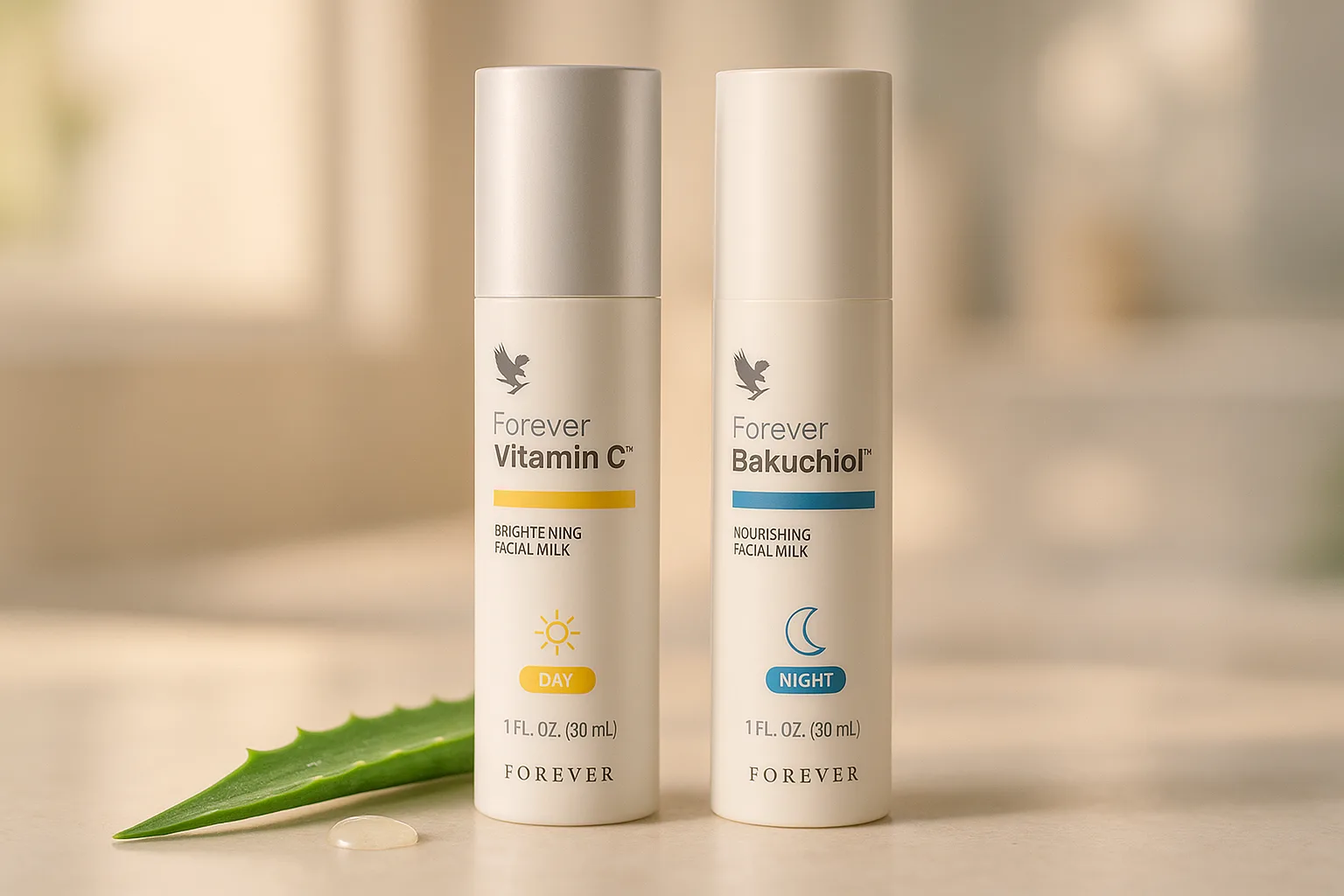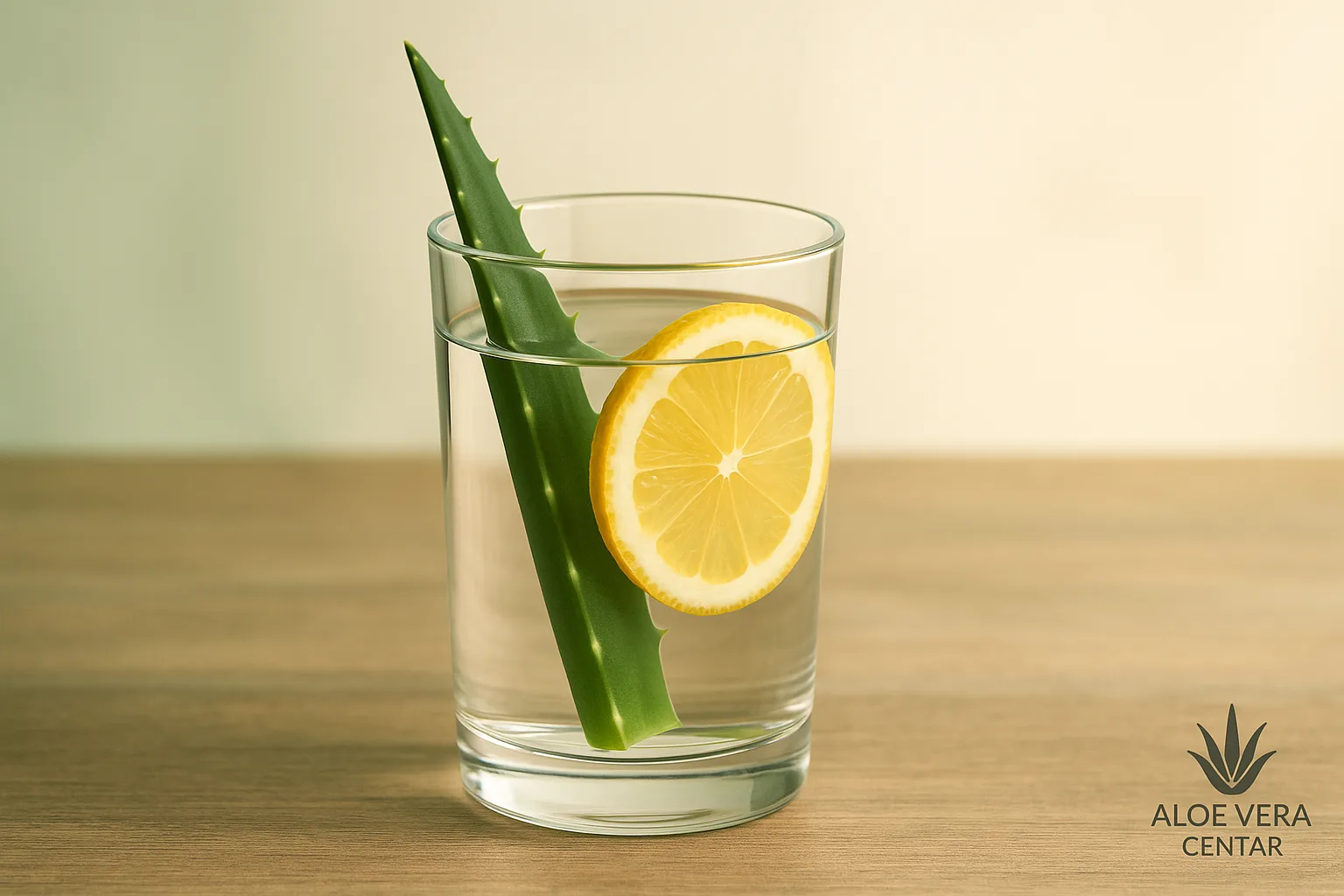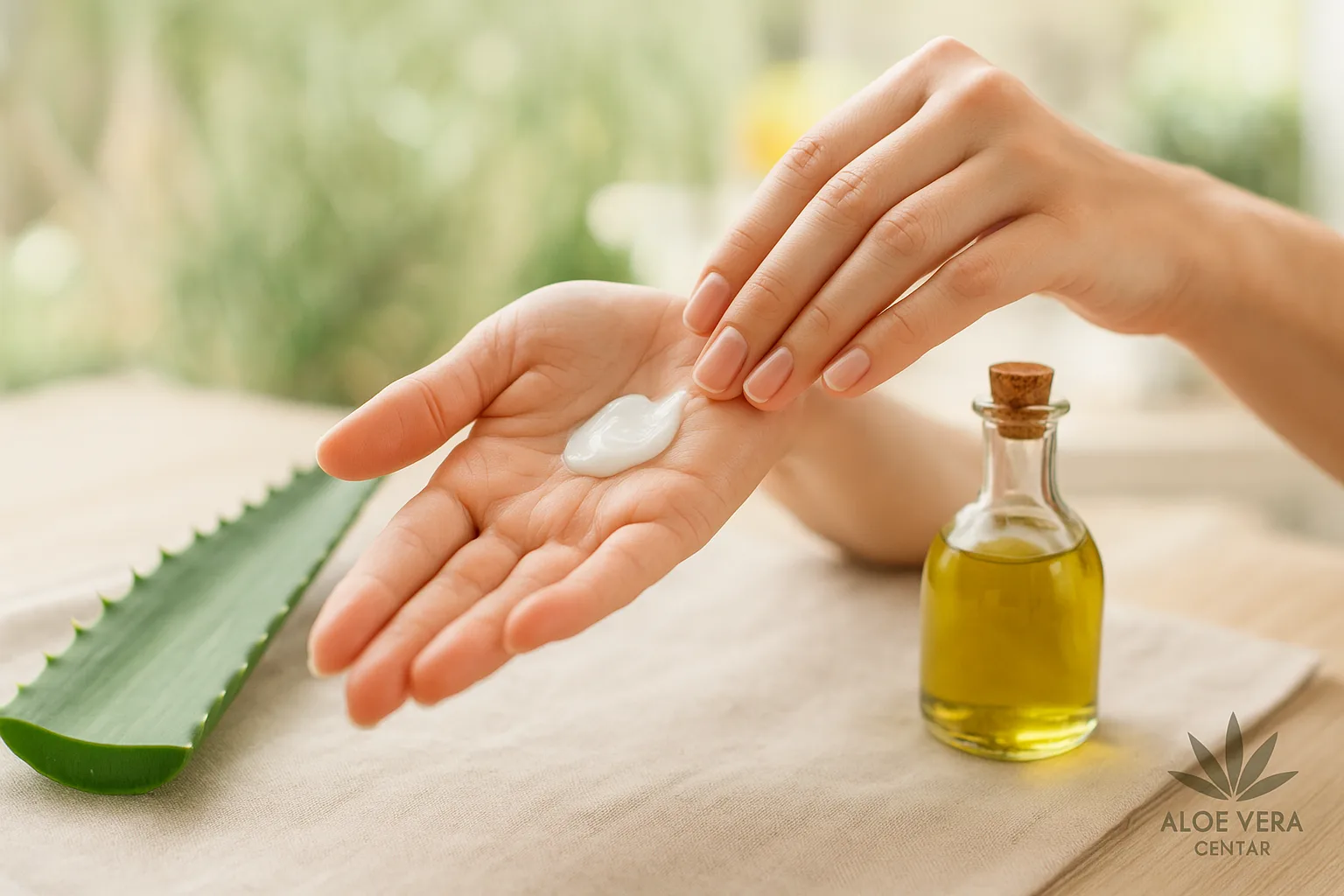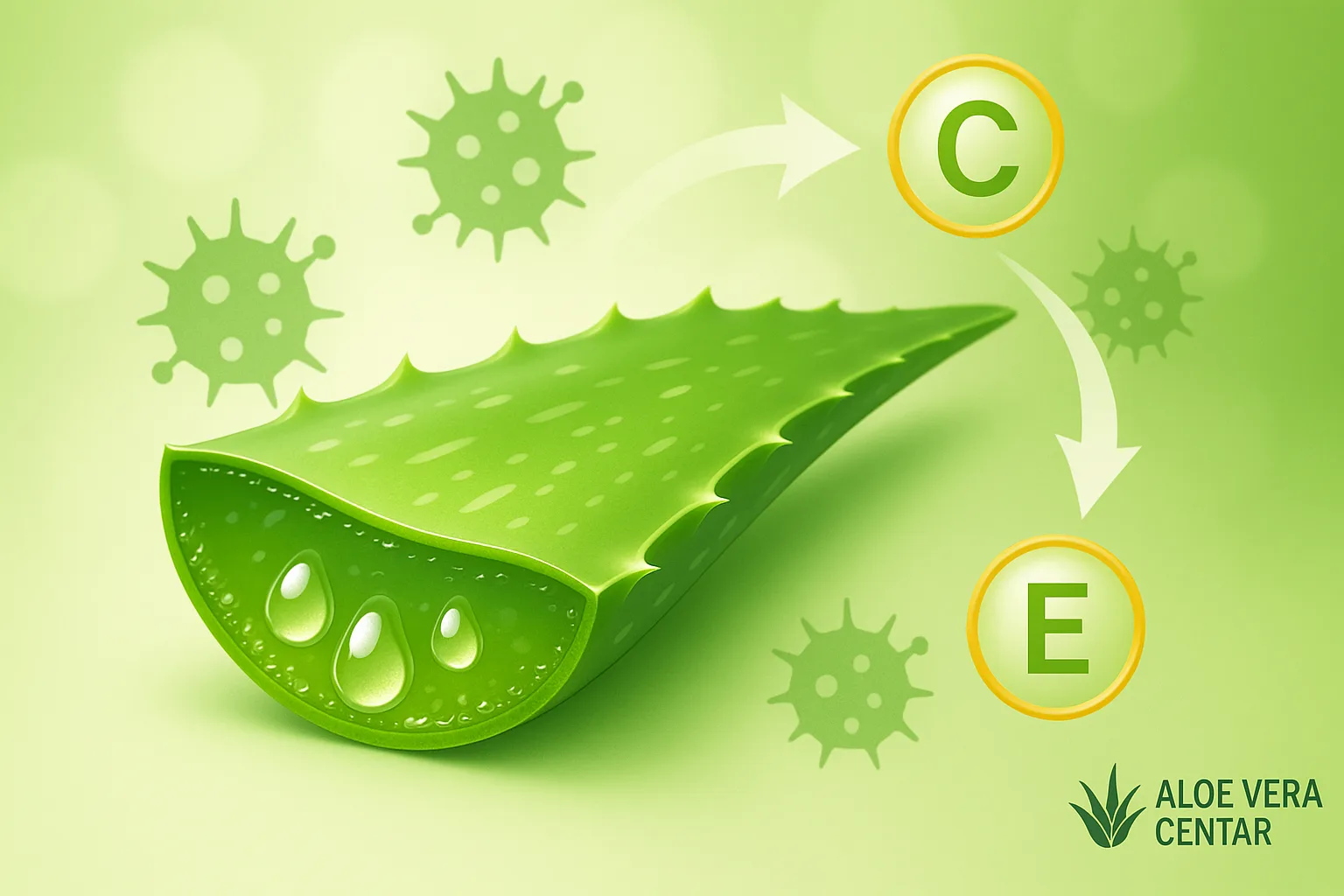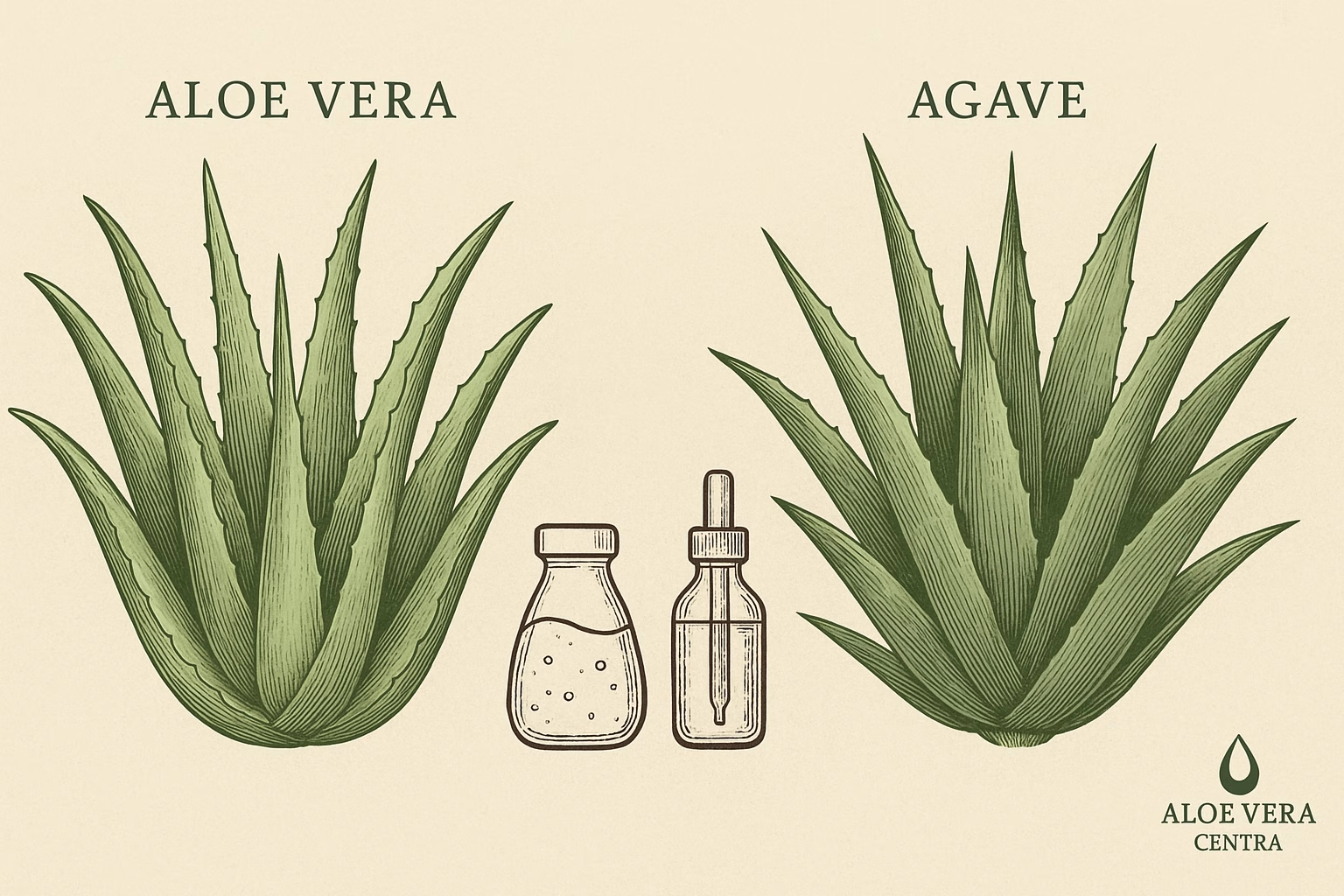
Aloe Vera vs. Agave – What’s the Difference and which is the Better Choice?
Aloe Vera vs. Agave: Main Differences and why People Often Confuse Them
Aloe vera or Aloe barbadensis Miller and agave belong to the large family of succulent plants that grace many homes, terraces, and medicinal cabinets. You might wonder why so many people confuse them? Below, we reveal all visual, chemical, and practical differences and provide clear guidelines on when to reach for Aloe and when for Agave. Keep reading to learn how to avoid costly mistakes when buying and using these similar – yet very different – plants.
1. Botanical Origin in Two Sentences
Aloe vera belongs to the Asphodelaceae family, while Agave is a member of the Asparagaceae family. Although they share desert origins, their evolutionary trees split millions of years ago, leaving traces that we’ll now examine in detail.
2. Historical Use – from Egypt to Today’s Kitchens
Evidence of Aloe vera dates back to ancient Egypt, where pharaohs called it the “plant of immortality”.
Agave, on the other hand, became famous in Mesoamerican civilizations as a raw material for syrup and – you guessed it – tequila. Sounds exotic? We’ve only scratched the surface.
3. Visual (Dis)Similarities: how to Recognize the Plant with the Naked Eye
- Leaves: Aloe vera has thicker, softer leaves filled with gel, while Agave leaves are harder and leathery.
- Spines: Aloe’s are smaller and softer; Agave defends itself with strong, sharp spines.
- Growth: Aloe produces side shoots, while Agave typically develops “rosettes” and flowers only once in its lifetime.
But that’s not all… In stores, young plants are often labeled simply as “succulents,” making it easy to make mistakes. Tip: gently squeeze the leaf edge – if you feel a gelatinous softness, you’re probably holding an Aloe.
4. Chemical Composition: Gel versus Syrup
Aloe vera gel contains over 70 bioactive compounds, with acemannan being the most famous – a polysaccharide responsible for skin hydration and regeneration. Agave syrup, in contrast, is rich in fructose – making it sweet but potentially problematic for people with metabolic syndrome.
5. Health Benefits: who Gets the Gold?
5.1 Aloe Vera – the Queen of Skin Care
Using fresh gel or certified supplements like Forever Aloe Vera Gel can help with irritations, burns, and digestive issues. A study of 200 patients showed 83% faster healing of surface burns with Aloe application.
5.2 Agave – Sweet, but in Moderation
Agave syrup has a lower glycemic index than white sugar, but high fructose content can promote liver fat accumulation when consumed excessively. You might wonder why? Fructose is metabolized differently from glucose, and in excess, it’s associated with insulin resistance.
6. In Diet: Smoothie vs. Sweetener
When adding Aloe vera to smoothies for digestion, combine it with low-sugar ingredients like spinach or cucumber.
Use Agave as a honey substitute in vegan recipes – but limit yourself to one teaspoon daily.
7. Cosmetic Application: Gel against Dryness, Syrup in Scrubs?
Aloe vera is the undisputed favorite for skin care as it deeply hydrates and soothes inflammation. Beginners can try a gentle scrub with Aloe and oatmeal for smooth skin. Agave syrup, due to its stickiness, is less commonly used in cosmetics, but DIY enthusiasts add it to homemade masks for shiny hair.
8. How to Grow Them Effortlessly?
For practical tips on growing Aloe indoors, ensuring drainage and moderate watering is crucial. Agave loves even more sun and less frequent watering but takes up more space – an important note for residents with smaller balconies.
9. Recognition in Stores: Beware of Confusion
Check the label: manufacturers sometimes use the general term “aloe” for products that actually contain agave extract – especially in sweet drinks. If unsure, ask an expert or use our AI advisor that will guide you through ingredient verification in just a few clicks.
10. Most Common Mistakes and how to Avoid Them
- Buying “aloe juice” that actually contains minimal Aloe and is mostly sweetened Agave syrup.
- Putting pure Agave syrup on burns – it can worsen the condition due to high sugar content.
- Planting Agave in too small a pot – its deep roots need space.
11. When to Choose Aloe and when Agave?
- For skin and digestion: reach for Aloe vera.
- For natural sweetening: use Agave syrup, but moderately.
- For a large decorative plant: choose Agave and prepare enough space.
12. Frequently Asked Questions
What if I Accidentally Eat an Agave Leaf Thinking It’s Aloe?
Small amounts are usually not dangerous but can cause stomach irritation. If nausea occurs, drink water and monitor symptoms – consult a doctor if needed.
Can Agave be Used Directly on the Skin?
It’s not recommended. The difference in pH and lack of hydrating compounds make it less suitable for dermal application.
Does Aloe Vera Help with High Blood Sugar?
Research suggests that Aloe may support glucose regulation, but consult your doctor before changing therapy.
Is Agave Syrup Safe During Pregnancy?
In moderate amounts yes, but pregnant women should limit additional sugars. For customized advice, visit our pregnancy supplements guide.
Conclusion: Smart Choice without Confusion
Now you know that Aloe vera and Agave share desert DNA but offer completely different benefits. Next time you need to soothe your skin, reach for Aloe gel. If you want to naturally sweeten a dessert, choose Agave syrup – but with caution. Want an even simpler approach? Quick purchase with a 15% discount and detailed advice is available by clicking the button below the article. Don’t wait – your skin and digestion deserve the best care!
Related Articles You might Like
Looking for more natural recipes and advice? Try onion and honey syrup for cough – a traditional remedy with modern explanations.
For universal first aid for burns, stings, and irritated skin, meet Forever Aloe First spray, a must-have in every home medicine cabinet.
If you’re interested in differences between Aloe-based products, read the comparison: Forever Aloe Vera Gel vs. Aloe Berry Nectar – find out which is the right choice for you.
Note: This article is for informational purposes and does not replace medical advice. For specific health questions, consult a qualified professional.

